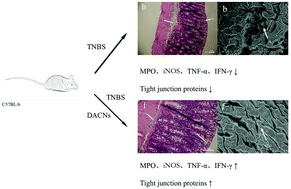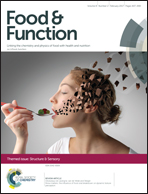Anti-inflammatory effects of Dioscorea alata L. anthocyanins in a TNBS-induced colitis model
Abstract
The purple yam, Dioscorea alata L., is an important source of starch, vitamins and polyphenols. Five different pigments from the purple tubers of this plant were separated by high-performance liquid chromatography–mass spectrometry, and the anthocyanin fraction (DACN) was collected. The anti-inflammatory effects of DACNs were investigated at different concentrations and compared with the standard colitis treatment, 5-aminosalicylic acid, in a trinitrobenzenesulfonic acid (TNBS)-induced colitis mouse model. Macro- and microscopic parameters including body weight change, disease activity index (DAI) and intestinal histology were used for the determination of the anti-inflammatory effects of DACNs. The gene expression levels of tight junction-related proteins in the intestine, myeloperoxidase activity, inducible nitric oxide synthase activity in colonic tissues and pro-inflammatory cytokine production in serum were also measured to elucidate the mechanism of DACN action. Eighty micrograms of DACNs per kilogram of body weight produced potent anti-inflammatory effects in the mouse model of inflammatory bowel disease (IBD), as shown by the DAI (2.78 ± 0.38 vs. 0.44 ± 0.51). Therefore, DACNs may be applied as a potential food supplement in IBD therapy.



 Please wait while we load your content...
Please wait while we load your content...